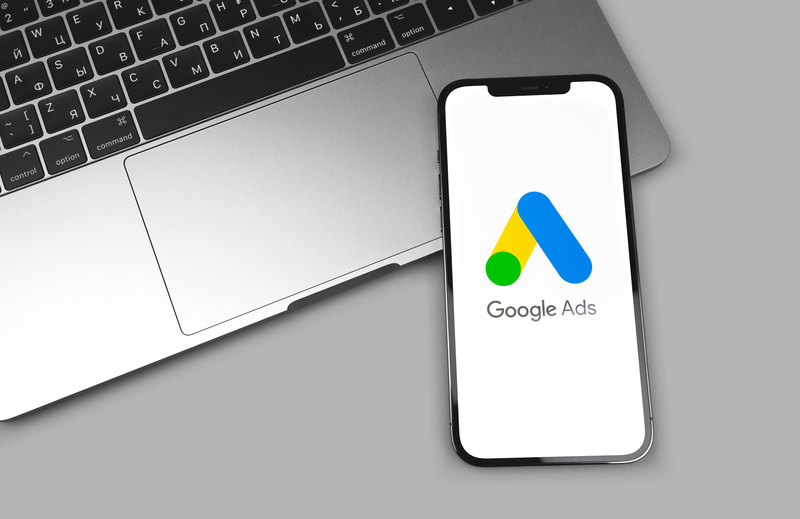In the fast-paced world of digital marketing, Google Dynamic Ads are a game changer for businesses looking to connect with their audience in a more personalized and effective way.
These ads leverage the power of Google's machine learning to dynamically display products or services to users based on their unique online behavior and interactions. This guide delves into the intricacies of Google Dynamic Ads, including Google Dynamic Remarketing and Dynamic Search Campaigns. It provides insights into how businesses can use these tools to enhance their digital marketing strategies and drive significant results.

The essence of Google Dynamic Ads
Google Dynamic Ads are designed to take the guesswork out of your advertising efforts. By automatically using content from your website to create ads targeted to your ideal audience, these ads ensure that your message is always relevant and timely. This dynamic approach to advertising saves time and maximizes your ad spend by focusing on users who have already shown an interest in your products or services.
One of Google Dynamic Ads' key benefits is its ability to adapt. Whether your inventory changes or your website is updated, these ads adjust in real time, ensuring your message is always up to date. This level of responsiveness is invaluable in keeping your audience engaged and driving conversions.
Google Dynamic Remarketing
Google Dynamic Remarketing takes ad personalization a step further by targeting users who have previously visited your website or used your app. This strategy effectively re-engages potential customers, reminds them of the products they viewed but didn't purchase, and encourages them to complete their transactions.
- Tailored ads: Dynamic remarketing ads are customized for each user, showing them products or services they are already interested in, significantly increasing the likelihood of conversion.
- Broad reach: These ads can appear across Google's vast network, including Google Search, the Display Network, YouTube and Gmail, ensuring that your message reaches your audience wherever they are online.
Crafting a Google Dynamic Remarketing Campaign
These campaigns can significantly enhance your re-engagement efforts and boost conversions by displaying personalized ads based on past behavior. Here’s a step-by-step guide to setting up a successful Google Dynamic Remarketing campaign, ensuring you maximise this powerful digital marketing strategy.
Step 1: Prepare Your Website and Google Merchant Center
Before launching your campaign, ensure your website is appropriately tagged for remarketing. This involves:
- Installing the Google Ads tag on all pages of your website. This tag collects data on visitors' actions, allowing Google Ads to tailor remarketing ads to each user’s interests.
- If you promote products from an online store, you should set up a Google Merchant Center account and link it to your Google Ads account. You should upload your product feed to the Merchant Center, where your dynamic ads pull product information.
Step 2: Create a Remarketing Audience
In Google Ads, navigate to the "Shared Library" and select "Audience Manager" to create your remarketing lists. Consider segmenting your audience based on their interaction with your website, such as:
- Visitors who viewed specific pages but didn't make a purchase
- Users who added items to their cart but didn't complete the checkout process
- Past customers who might be interested in related products
Segmenting your audience allows for more personalized and effective remarketing efforts.
Step 3: Launching Your Dynamic Remarketing Campaign
With your audiences created and your website prepared, you’re ready to set up your campaign:
- Click “Campaigns” and the “+” button in Google Ads to create a new campaign.
- Choose 'Sales' or 'Leads' as your campaign goal, depending on your business objectives.
- Select 'Display' as the campaign type, then choose 'Standard display campaign.'
- Enter your campaign settings, including name, locations, bidding strategy, and budget.
- When prompted to choose an ad group type, select “Dynamic remarketing.”
- Follow the steps to set up your ad group, choosing the remarketing audiences you created earlier.
Step 4: Designing Your Dynamic Ads
Now, it’s time to create the ads that will be shown to your remarketing audiences:
- Upload high-quality images, logos, and videos that you want to feature in your ads. Google Ads will dynamically assemble these assets into ads, tailoring them to match the interests of your remarketing audience based on their past interactions with your website.
- Craft compelling ad copy, including headlines and descriptions. Even though the products are dynamically inserted, your ad copy is crucial in convincing users to click.
Step 5: Monitoring and Optimizing Your Campaign
Once your campaign is live, continuous monitoring and optimization are key to maximizing its effectiveness:
- Review performance data regularly in Google Ads to understand how different audience segments and ad creatives perform.
- Test different strategies, such as adjusting bids for high-performing segments or refining your ad creatives based on which assets perform best.
- Use Google Analytics with Google Ads to gain deeper insights into how users interact with your website after clicking your ads.
Expert Guidance from USA Link System
Setting up a Google Dynamic Remarketing campaign involves a nuanced understanding of both your audience and the technical aspects of Google Ads. At USA Link System, we specialize in developing and managing dynamic remarketing campaigns that re-engage your audience and convert their interest into tangible results.
By partnering with us, you gain access to a team of digital marketing experts committed to leveraging the latest technologies and strategies, including Google Dynamic Ads, to propel your business forward. Let USA Link System help you navigate the complexities of digital remarketing and unlock the full potential of your online advertising efforts.
















Leave a Comment
Comments (0)